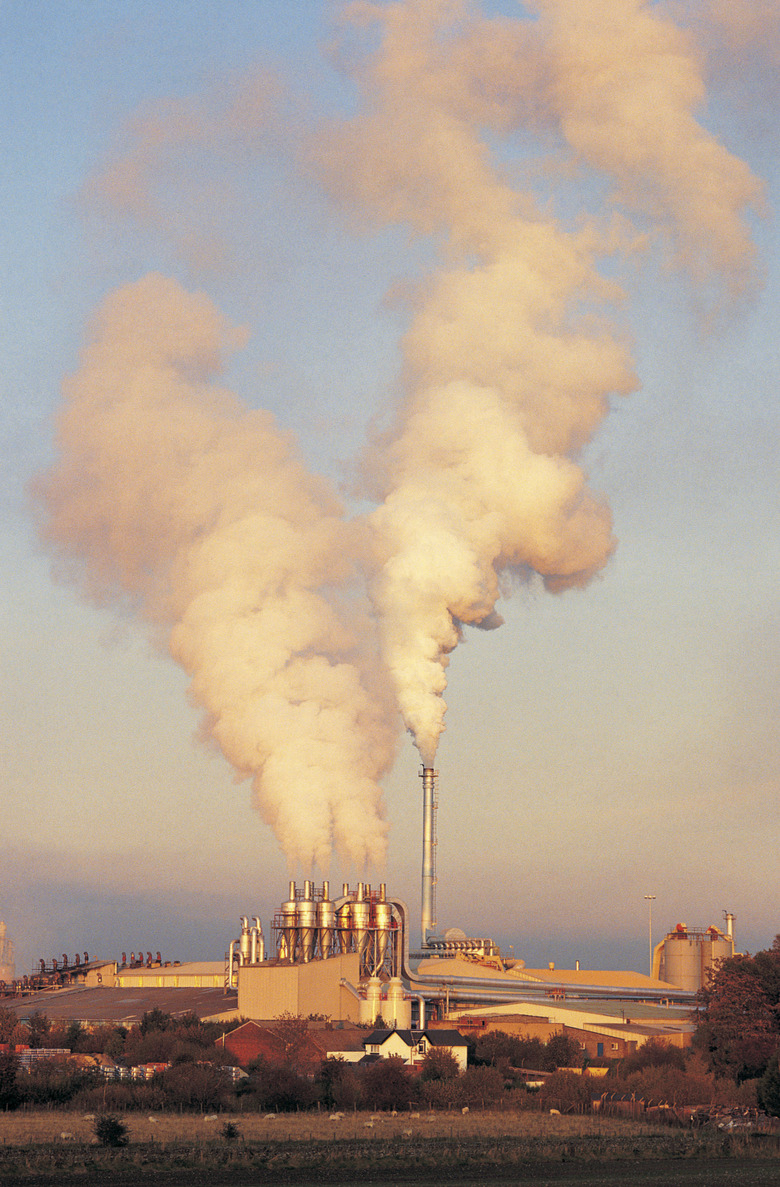Properties Of Greenhouse Gases
Global warming, currently the source of much social and scientific concern, is mainly caused by greenhouse gases in the atmosphere. A good understanding of their physical properties is critical for managing and reducing global warming. Scientists have identified and analyzed how these gases are formed and interact and measured their relative contributions to global warming.
The Greenhouse Effect
The Greenhouse Effect
Although less than one percent of the atmosphere consists of greenhouse gases, their influence on the global environment is great. The greenhouse effect is caused by gases in Earth's atmosphere. Incoming solar energy passes through the atmosphere, which retains the resulting heat and warms Earth's near-surface temperature. This effect is driven by the greenhouse gases, which capture and retain heat. Consequently, the energy entering the atmosphere is greater than that leaving it, and this gradually raises the overall global temperature.
Greenhouse Gases
Greenhouse Gases
Greenhouse gases most closely connected to global warming include carbon dioxide, methane, nitrous oxide and the fluorocarbons. Since the beginning of the industrial age, significant amounts of each have been added to the atmosphere by human activities. Water vapor is also a greenhouse gas that's fairly abundant in the atmosphere. The role of human activity in creating water vapor is less clear, though. In addition to being greenhouse gases, fluorocarbons have another harmful property. They tend to destroy the upper atmosphere's ozone layer, which protects us from harmful ultraviolet radiation. Ozone is itself also a greenhouse gas, however.
Key Properties
Key Properties
The three important properties of a greenhouse gas are the wavelength of the energy the gas absorbs, how much energy it absorbs, and how long the gas remains in the atmosphere.
Greenhouse gas molecules absorb energy in the infrared region of the spectrum, which we generally associate with heat. Greenhouse gases absorb more than 90 percent of atmospheric energy in a very narrow part the energy spectrum. However, absorption energies are different for each greenhouse gas; together, they absorb energy over a large part of the infrared spectrum. Greenhouse gases remain in the atmosphere from 12 years for methane to 270 years for a fluorocarbon. About half of atmospheric carbon dioxide will disappear in the first century after its release, but a small portion will persist for thousands of years.
Global Warming Potential
Global Warming Potential
The global warming potential of a greenhouse gas measures its contribution to global warming. Its value is based on the three key properties, described earlier. The warming effect of a greenhouse gas, divided by the warming effect of the same amount of carbon dioxide, equals its warming potential.
For example, methane has a warming potential of 72 for a 20-year time frame. In other words, one ton of methane would have the same effect as 72 tons of carbon dioxide in the 20 years following their release into the atmosphere. Methane, nitrous oxides and the fluorocarbons all have warming potentials much higher than carbon dioxide, but the latter still remains the most important greenhouse gas because there is so much of it.
Cite This Article
MLA
Soonawala, Nash. "Properties Of Greenhouse Gases" sciencing.com, https://www.sciencing.com/properties-greenhouse-gases-3298/. 24 April 2017.
APA
Soonawala, Nash. (2017, April 24). Properties Of Greenhouse Gases. sciencing.com. Retrieved from https://www.sciencing.com/properties-greenhouse-gases-3298/
Chicago
Soonawala, Nash. Properties Of Greenhouse Gases last modified March 24, 2022. https://www.sciencing.com/properties-greenhouse-gases-3298/
